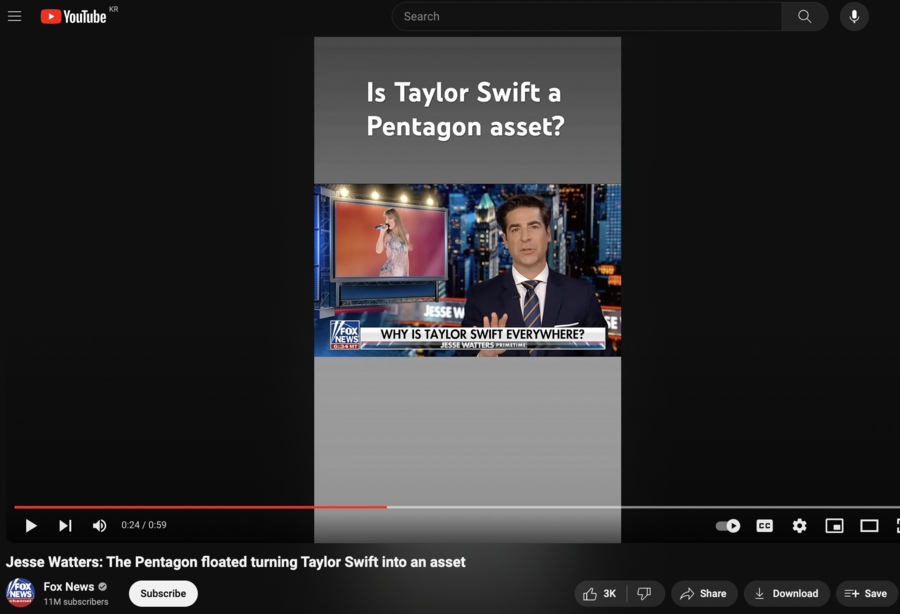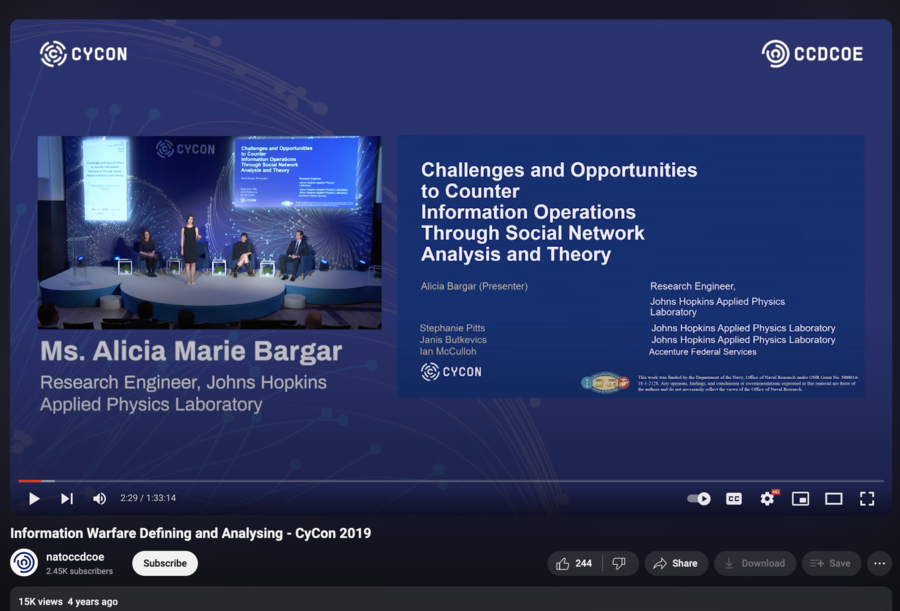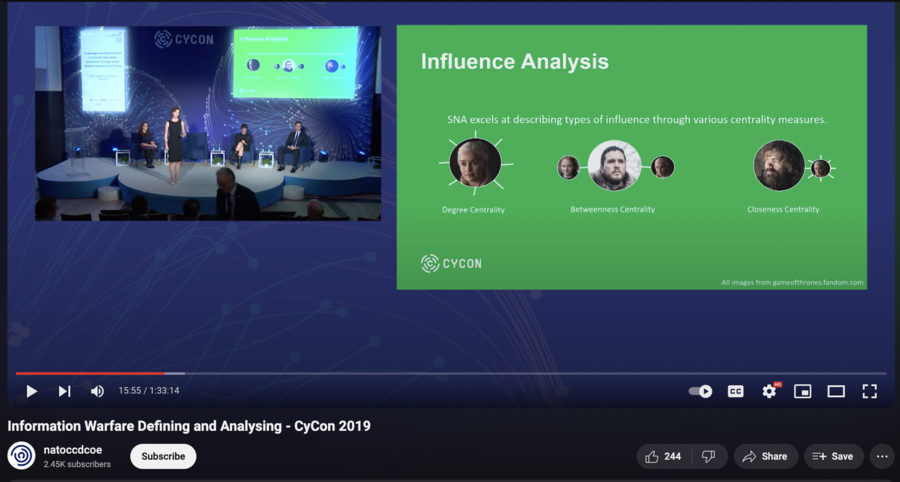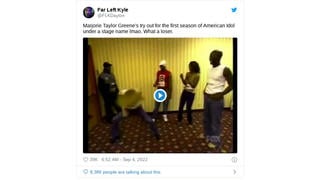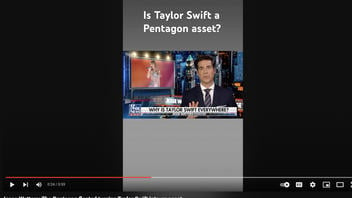
Did an old recording on YouTube prove that the Pentagon contemplated turning Taylor Swift into an "asset"? No, that's not true: The video doesn't say that. It captured a fragment of an open conference where a person with no known connections to the Department of Defense used examples of famous people and fictional characters to better explain the concepts covered in her presentation.
The claim originated from a video (archived here) on YouTube published on January 10, 2024. The add-on top banner in the clip showed a question:
Is Taylor Swift
a Pentagon asset?
At the 0:19 mark, Fox News TV host Jesse Watters continued:
... have you ever wondered why or how she blew up like this? Well, around four years ago, the Pentagon Psychological Operations Unit floated turning Taylor Swift into an asset during a NATO meeting. What kind of asset? A psyop for combating online misinformation.
This is what it looked like on YouTube at the time of writing:
(Source: YouTube screenshot taken on Wed Jan 31 16:03:34 2024 UTC)
What was shown next was a heavily edited fragment of a video featuring a woman saying:
You came in here wanting to understand how you just go out there and counter that information operation. But the idea is that social influence can help, can help encourage or promote behavior change, so potentially as like a peaceful information operation? I include Taylor Swift in here because she's, you know, she's a fairly influential online person.
A reverse image search, however, shows that the event was not a secret Pentagon meeting. The footage (archived here) was recorded at a public event -- the 11th International Conference on Cyber Conflict (archived here), organized by NATO in 2019. The speaker, Alicia Marie Bargar (archived here), was not a Pentagon official -- she prepared the presentation while working as a research engineer at the Johns Hopkins Applied Physics Laboratory.
(Source: YouTube screenshot taken on Wed Jan 31 17:01:59 2024 UTC)
At the 18:24 mark, Bargar said:
... the idea is that social influence can help, can help encourage or promote behavior change, and the theory here is the sense that this sort of approach works as well with regards to misinformation.
As she moves to the slide with Taylor Swift, the researcher explicitly says why she mentions the singer as a hypothetical example:
I include Taylor Swift in here because she's, you know, she's a fairly influential online person. I don't know if you've heard of her. ... This is a cropped image, but she's standing next to, you know, a 'Go vote' sign. And, actually, celebrities, at least in the U.S., regularly will post pictures of themselves with an encouragement to people to go vote, and this has a measurable effect on voter turnout.
Besides Swift, the presentation incorporated other examples, including characters from the "Game of Thrones" saga who do not even exist in real life:
(Source: YouTube screenshot taken on Wed Jan 31 17:41:26 2024 UTC)
After the segment aired on Fox News, Bargar told Business Insider (archived here) that she still doesn't work for NATO or the Pentagon. She described the references to Swift as:
an incidental example of a famous person to explain a social network analysis concept to the audience.
Reporting on the claim, Politico quoted Pentagon spokesperson Sabrina Singh, who responded (archived here) by citing one of Swift's songs:
... as for this conspiracy theory, we are going to shake it off.
Other Lead Stories fact checks about the entertainment industry can be found here.

